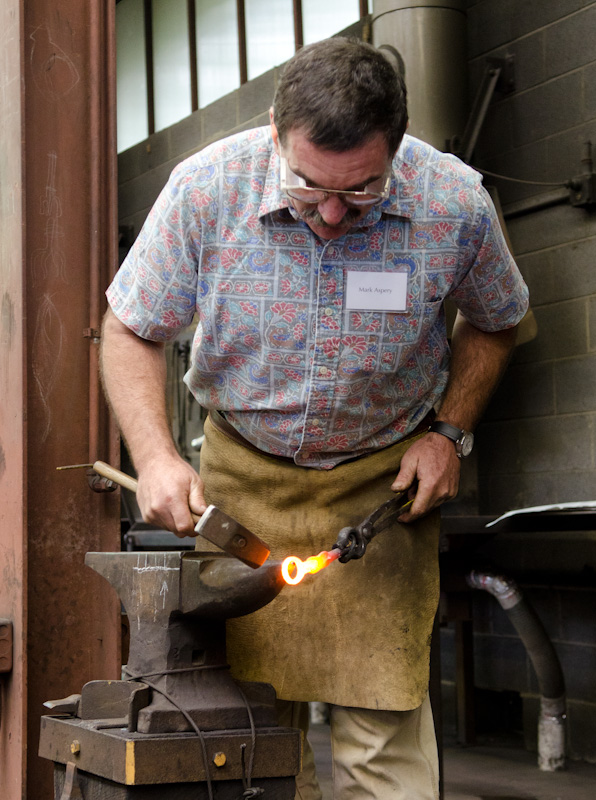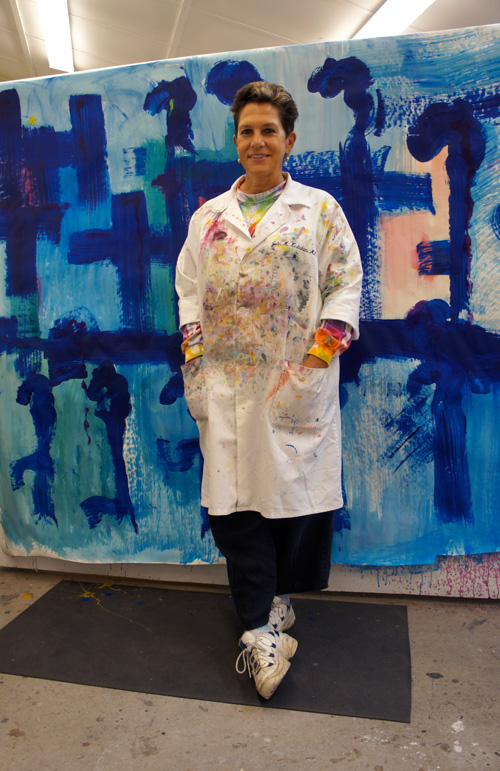
Color theorist Alicia D. Keshishian shows us that painting isn’t brain surgery. Or is it?

Last night’s program for the Penland instructors’ retreat was, eventually, fifteen small discussion groups on different topics related to teaching. The topics were things like “the continuum of technique to content” or “teaching collaboration.” Each discussion group had a designated leader, and the evening began with each of them telling a brief story or making a short statement to introduce their topic.
The idea was to give everyone a taste of the discussions to come and also to motivate people to select one group or another. The sequence of introductions made for an inspiring hour of ideas and anecdotes.
Painter and photographer Holly Roberts was leading a discussion based on the fundamental teaching tasks of inspiration, connection, and encouragement. This was her statement:
“I love to teach. I’m primarily a studio artist, but teaching is the one thing in my life that has always continued in an upward, positive direction. I mostly teach in workshops, like at Penland, but I’ll teach anything, anywhere.
Why do I love to teach? Why does it work? Why do I think I’m a beneficial teacher? When I ask these questions, I think about these three words a lot: inspire, connect, and encourage.
The first word, inspire, is the easiest one. It’s a no-brainer. If you’re going to teach well, if you’re going to inspire, you have to be very, very good at what you do, you have to be the best you can be, you have to be passionate. This is something you have to do on your own; it’s not like I can tell you, “Go be good at this.” You have to already have that. What happens when you already have that expertise, and that knowledge, and that love, and that passion? Then you see it in your students and you try and bring it out. If you don’t have that then you’re just mumbling, basically.
The next word is connect. I feel very strongly that to connect, you have to be reaching the right audience. For me, my audience is anybody who cares about art. That’s my tribe. That’s who I am, that’s who I know, that’s who I love. I can be in a room full of horrible people, but if there is an artist gene in them, I know them. That’s my tribe. When I started out, I mostly taught workshops to women, middle-aged and older, and I loved those people. Now I’m one of them. I hated teenagers then, I thought, “Oh my god, I can’t teach them!” But now I can teach anybody, anywhere, any time, so long as they have that art thing in them.
The last word, encourage, is the most difficult, I think, but something we can all do if we work at it. It means that you must love every student the same. If you have a class of ten, or fifteen, or twenty students, you can’t show favoritism, you can’t have one student who is your star and another you want to strangle. You may want to strangle them, but it doesn’t matter – you must give them the same presence, the same love, the same concern. I don’t mean that they’re going to lay across your belly and you’re going to take them home for dinner. It’s a concern, a care, a presence, and it’s very difficult, because a lot of the time you’re going to hate some of your students, and you have to love them all the same, even when they’re driving you crazy. I’ve found that as time has gone on, those awful students have become easier, and less trouble, and then no problem at all, as I’ve gotten better, and embraced, them and stayed with it. But it’s really hard.
Everybody has a different experience of teaching, but these are the core truths I have found that have helped me to be an effective teacher.”
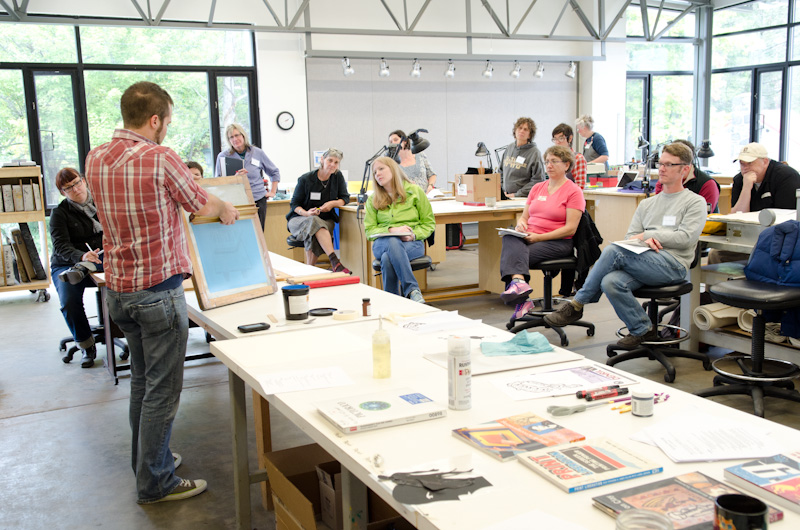
This week at Penland is entirely out of the ordinary. We are hosting a five day retreat for 100 Penland instructors. All fifteen of our studios are available for the participants. Along with our excellent studio coordinators, each studio has a studio assistant to help folks find things and figure things out. Many people are working in studios they are unfamiliar with.
Everyone was polled ahead of time to find out what sorts of demonstrations they might like to see and/or offer and then our program staff worked with everyone to create a schedule. All of this is optional of course; some folks may decide to stay in one studio and work on a project, others may move around a lot; we expect a lot of people to be teaching each other.
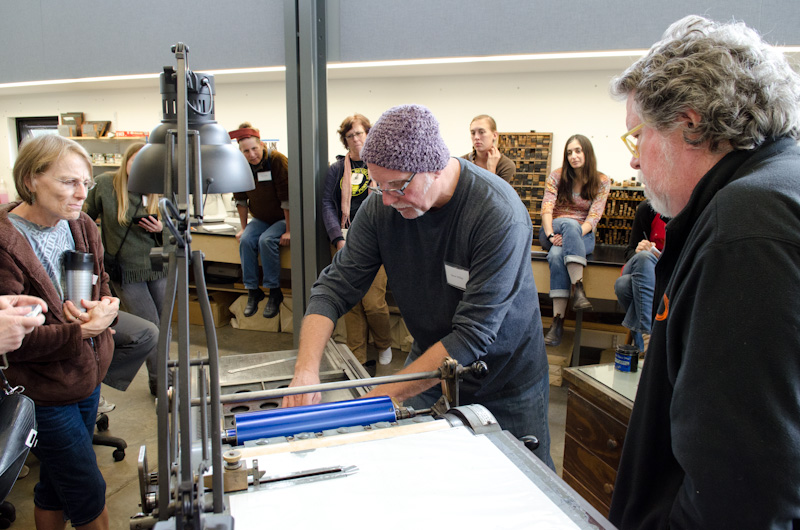
We hope that participants will share their teaching ideas and philosophies, strengthen connections with each other, try new materials, explore new ideas, learn from each other, get back in touch with what it means to be a student, and, of course, have fun.
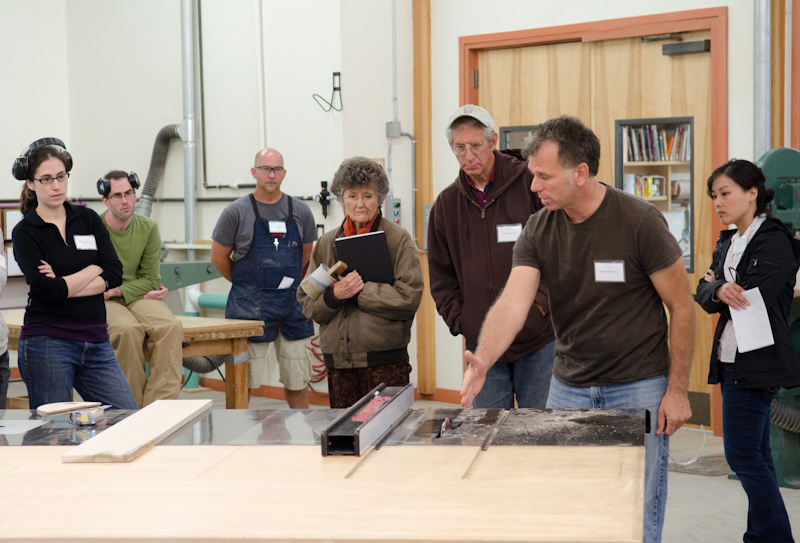
Artist/educators Christina Shmigel and Jeff Goodman worked with program director Dana Moore to plan three evening events (also optional) that are aimed at stimulating ideas and discussions.
These pictures are from Sunday, the first full day of the retreat. We’ll be posting on the blog regularly during the week, so stay tuned.
